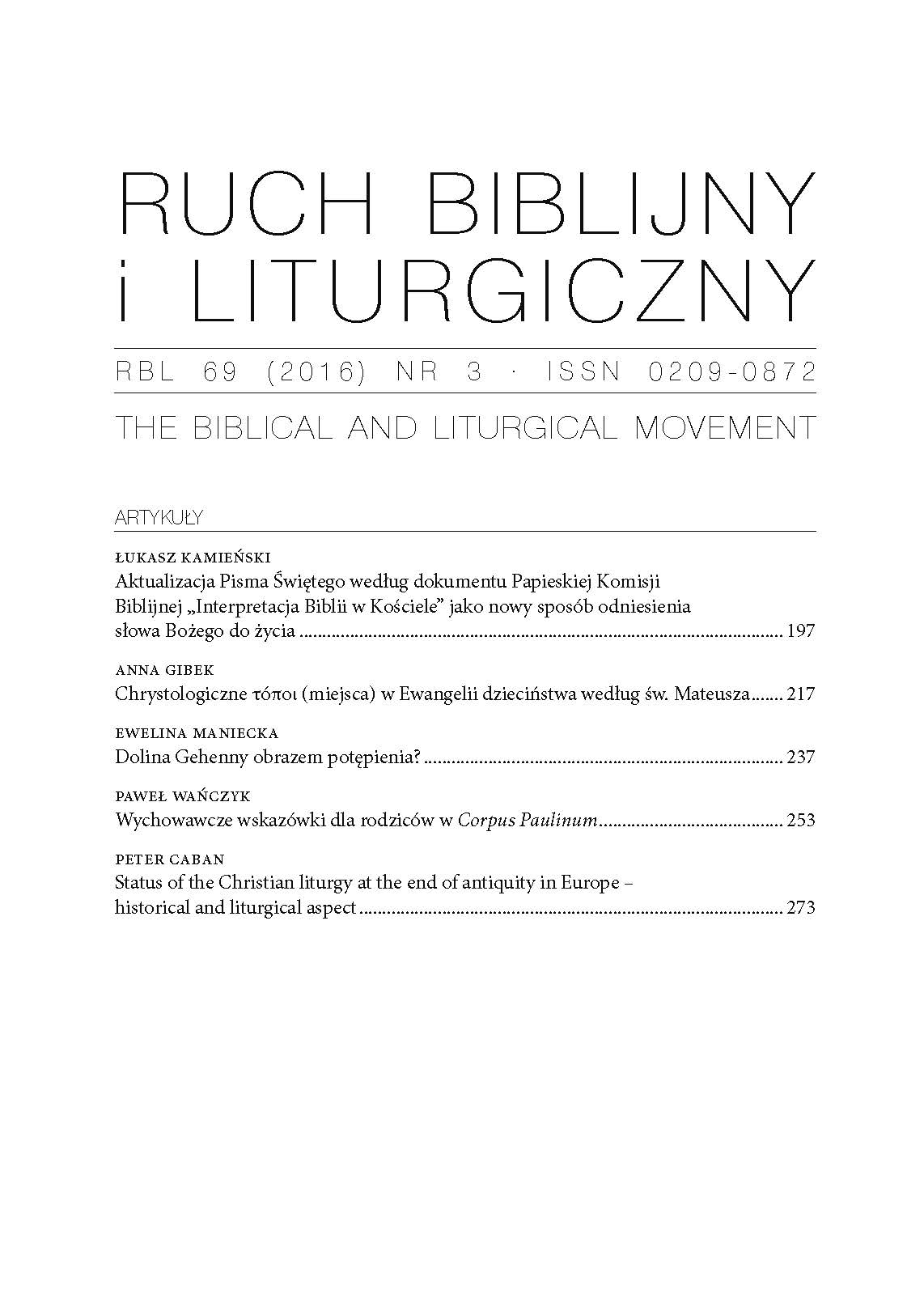Musica non grata? Motywy i obrazy muzyczne w Księdze Izajasza
Musica non grata? Musical motifs and images in the Book of Isaiah
Author(s): Grzegorz KubiesSubject(s): Music, Jewish Thought and Philosophy, Biblical studies, Sociology of Religion
Published by: Polskie Towarzystwo Teologiczne
Keywords: Bible; Music; musical instruments; Isaiah; ancient culture;
Summary/Abstract: In the article I interpret musical motifs and images in the Book of Isaiah. The main musicological part of the text precede comments on biblical prophecy, symbolic acts (among them acts connected with music) and Isaiah, the prophet living in the VIII century BC. The research material – eleven passages where musical instruments are mentioned (ḥālîl, šōpār, tōp, kinnôr, nēbel), has been divided into three groups. In the first one (2 passages) I discuss the topos of shofar as the signalling tool, in the second (6 passages) I undertake research into ancient music performance practice. In the last group I examine three passages where musical instruments form parts of the simile, a figure of speech. All musical motifs and images are presented in broad biblical, theological and cultural contexts. Although the music in the Book of Isaiah is linked with drunkenness (Isaiah 5, 12, 24, 10), prostitution (Isaiah 23, 16), associated with the hostile powers (Isaiah 14, 1, 30, 32), it „sounds” ad maiorem Dei gloriam (Isaiah 30, 29, 38, 20), it is not unwanted art (non grata). The negative image of the music can not be associated with the shofar (Isaiah 18: 3, 27, 13, 58, 1)
Journal: Ruch Biblijny i Liturgiczny
- Issue Year: 67/2014
- Issue No: 4
- Page Range: 293-316
- Page Count: 24
- Language: Polish

